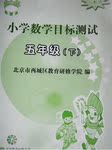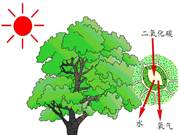
| A.Running | B.Biting | C.Lying down | D.Sleeping |
| A.They leave their homes. | B.They hurt people. |
| C.They lie down in grass. | D.They stay together in large groups. |
| A.Fish | B.Cows | C.Pigs | D.All of the above. |
| A.disappeared | B.increased | C.been the same as before. | D.never changed. |
| A.Natural events and animals’ actions. |
| B.What animals do during earthquakes |
| C.Many earthquakes of Japan. |
| D.Some stories about animals. |


 目标测试系列答案
目标测试系列答案科目:初中英语 来源:不详 题型:阅读理解
| A.discovered CaiLun invented paper |
| B.learned to make paper |
| C.saw many wonderful things |
| D.told people about it |
| A.1700 | B.2000 | C.2800 | D.48000 |
| A.To use both sides of every piece of paper |
| B.To use the paper bags from shops more than once |
| C.To use cotton handkerchiefs instead of paper ones |
| D.To grow more trees |
| A.If we keep on wasting paper , we will have no paper to use |
| B.The Chinese used paper money much earlier than the people in western countries |
| C.About 48000 trees can be used to make 2800 tons of paper |
| D.It is never too late to plant trees for paper . |
| A.Saving Paper | B.The history of Paper |
| C.Cotton Handkerchiefs Back Again | D.CaiLun , the Great Inventor |
查看答案和解析>>
科目:初中英语 来源:不详 题型:完形填空
| 小题1: |
|
| 小题2: |
|
| 小题3: |
|
| 小题4: |
|
| 小题5: |
|
| 小题6: |
|
| 小题7: |
|
| 小题8: |
|
| 小题9: |
|
| 小题10: |
|
查看答案和解析>>
科目:初中英语 来源:不详 题型:阅读理解
| A.England. | B.China. | C.America. | D.Australia. |
| A.A Chinese teacher. | B.A history teacher. |
| C.A math teacher. | D.An English teacher. |
| A.He has a class. | B.He plays basketball. |
| C.He plays tennis with Bill. | D.He plays games with Mr. Brown. |
| A.Friendly. | B.Beautiful. | C.Interesting. | D.Fun. |
| A.All of the students play on the playground. |
| B.Mr. Brown plays basketball with his students. |
| C.Tom plays ping-pong with John. |
| D.The students on the playground have a nice time. |
查看答案和解析>>
科目:初中英语 来源:不详 题型:阅读理解
查看答案和解析>>
科目:初中英语 来源:不详 题型:阅读理解
| A.Everyone. | B.The writer. | C.Some people. | D.The teachers. |
| A.A school with many new computers. | B.A school with many new students. |
| C.A school with many new teachers. | D.A school connected to the Internet. |
| A.schools are still necessary | B.more schools should be built |
| C.there should be fewer schools | D.more computers are needed in schools |
| A.Because whole city is connected to the Internet. |
| B.Because everyone can go on the Internet. |
| C.Because getting online is very easy. |
| D.Because Scientists could give talks through the Internet. |
| A.Technology will change our way of learning. |
| B.If you are a student, you can set up websites to show new technology. |
| C.The schools provide computer labs for those who have no personal computers. |
| D.On the Internet, you can visit another city's libraries as easily as the people there. |
查看答案和解析>>
科目:初中英语 来源:不详 题型:完形填空
| 小题1: |
|
| 小题2: |
|
| 小题3: |
|
| 小题4: |
|
| 小题5: |
|
| 小题6: |
|
| 小题7: |
|
| 小题8: |
|
| 小题9: |
|
| 小题10: |
|
| 小题11: |
|
| 小题12: |
|
| 小题13: |
|
| 小题14: |
|
| 小题15: |
|
查看答案和解析>>
科目:初中英语 来源:不详 题型:阅读理解
| A.an important part of Chinese culture |
| B.the characteristics (特征) of different style of Chinese garden building |
| C.where foreigners can find Chinese gardens |
| D.how to appreciate Chinese gardens |
| A.There is a north-south axis in the center of garden |
| B.There are man-made hills and lakes in the gardens. |
| C.They were built because of some fairy tales. |
| D.They have colored-paintings. |
| A.private gardens | B.beautiful scenes |
| C.the houses | D.rivers and lakes |
| A.Chinese people often invite foreigners to visit a Chinese garden. |
| B.The landscape garden reflects different styles of the Song, Yuan, Ming and Qing Dynasties. |
| C.All three kinds of gardens make up the important part of Chinese culture which is appreciated by the people all over the world. |
| D.People enjoy the private gardens more than other two styles. |
| A.well | B.tight | C.garden | D.scene |
查看答案和解析>>
科目:初中英语 来源:不详 题型:阅读理解

| A.叶绿素 | B.氧气 | C.胡萝卜素 | D.蛋白质 |
| A.water and carbon dioxide |
| B.glucose and energy |
| C.sunlight and water |
| D.sunlight and carbon dioxide |
| A.plants change water and carbon dioxide into sugar |
| B.plants turn water and carbon dioxide into sugar with the help of sunlight |
| C.plants use glucose as food for energy and growing |
| D.chlorophyll is a great help |
| A.When autumn and winter come, the days get shorter and shorter. |
| B.During winter trees rest and live on the food they store during the summer. |
| C.During winter small amounts of yellow and orange colours are kept in the leaves all the time. |
| D.Trees begin to stop making food in summer. |
| A.all the plants can grow well with the strong sunlight |
| B.there are all kinds of plants on the earth |
| C.all the colours of the leaves aren’t made from chlorophyll |
| D.maples and oaks have the same reason as other trees for the change of colours |
查看答案和解析>>
湖北省互联网违法和不良信息举报平台 | 网上有害信息举报专区 | 电信诈骗举报专区 | 涉历史虚无主义有害信息举报专区 | 涉企侵权举报专区
违法和不良信息举报电话:027-86699610 举报邮箱:58377363@163.com